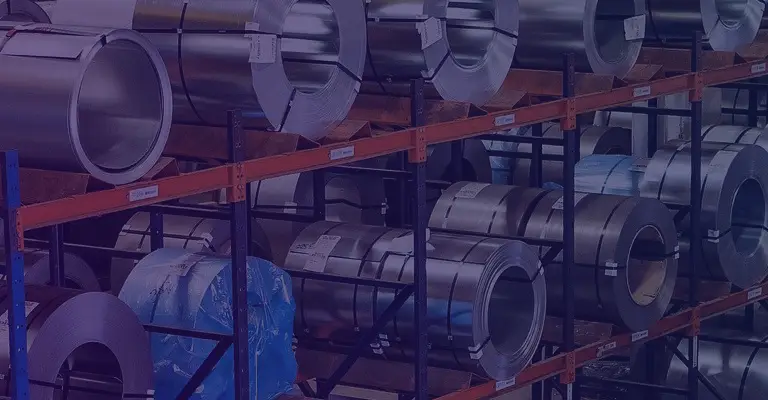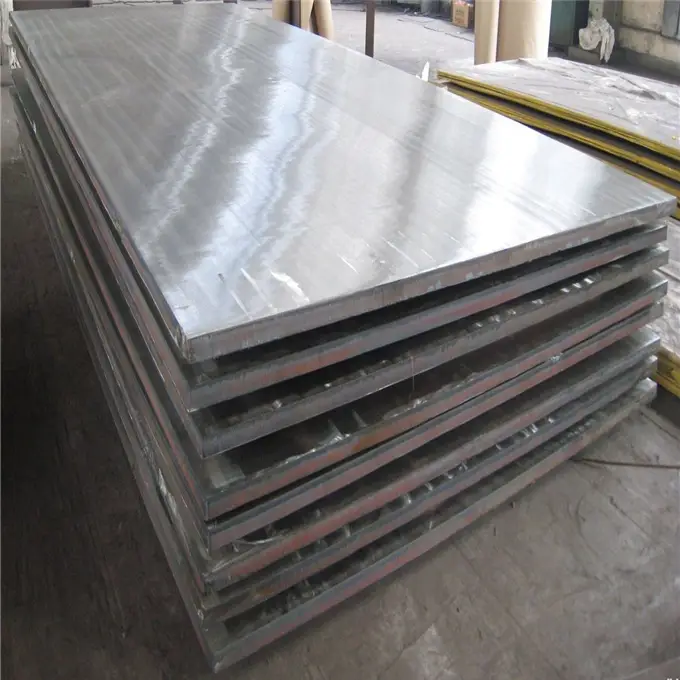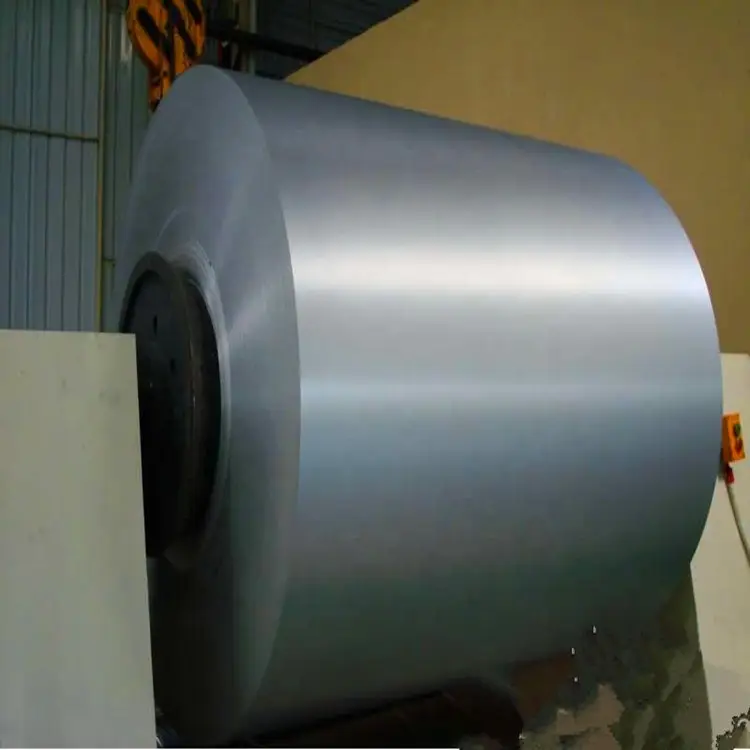carbon steel plate,steel coil,stainless steel plate,china export service provider.

carbon steel plate,steel coil,stainless steel plate,china export service provider.





About Duplex 2507
Duplex 2507 is a super duplex stainless steel designed for applications which demand exceptional strength and corrosion resistance. Alloy 2507 has 25% chromium, 4% molybdenum, and 7% nickel. This high molybdenum, chromium and nitrogen content results in excellent resistance to chloride pitting and crevice corrosion attack and the duplex structure provides 2507 with exceptional resistance to chloride stress corrosion cracking.
Usage of Duplex 2507 should be limited to applications below 600° F (316° C). Extended elevated temperature exposure can reduce both the toughness and corrosion resistance of alloy 2507.
Duplex 2507 possesses excellent mechanical properties. Often a light gauge of 2507 material can be used to achieve the same design strength of a thicker nickel alloy. The resulting savings in weight can dramatically reduce the overall cost of fabrication.
Applications
(1)Oil and gas industry equipment
(2)Offshore platforms, heat exchangers, process and service water systems, fire-fighting systems, injection and ballast water systems
(3)Chemical process industries, heat exchangers, vessels, and piping
(4)Desalination plants, high pressure RO-plant and seawater piping
(5)Mechanical and structural components, high strength, corrosion-resistant parts
(6)Power industry FGD systems, utility and industrial scrubber systems, absorber towers, ducting, and piping
|
Super Duplex 2507 Plate Thickness (mm) |
Super Duplex 2507 Plate Dimensions |
|
1.5 |
3m x 1.5m |
|
2.0 |
3m x 1.5m |
|
3.0 |
3m x 1.5m |
|
5.0 |
3m x 1.5m / 4m x 2m |
|
6.0 |
3m x 1.5m / 4m x 2m / 6m x 2m |
|
8.0 |
3m x 1.5m / 4m x 2m / 6m x 2m |
|
10.0 |
3m x 1.5m / 4m x 2m / 6m x 2m |
|
12.0 |
3m x 1.5m / 4m x 2m / 6m x 2m |
|
15.0 |
4m x 2m / 6m x 2m |
|
20.0 |
4m x 2m / 6m x 2m |
Metric Dimensions
|
Surface finish |
Thickness (mm) |
Width (mm) |
|
2B – Cold rolled, heat treated, pickled, skin passed |
0.25–8.0 |
max. 2032 |
|
2D – Cold rolled, heat treated, pickled |
0.4–6.35 |
max. 1524 |
|
2E – Cold rolled, heat treated, mechanically descaled |
0.4–8.0 |
max. 2032 |
|
2R – Cold rolled, bright annealed |
0.25–3.5 |
max. 1524 |
|
2H – Work hardened |
0.4–6.35 |
max. 1524 |
|
Polished, brushed |
0.5–4.0 |
max. 1524 |
Imperial Dimensions
|
Surface finish |
Gauge (in) |
Width (in) |
|
2B – Cold rolled, heat treated, pickled, skin passed |
10–24 |
max. 72* |
|
2D – Cold rolled, heat treated, pickled |
12–24 |
max. 60 |
|
BA Mexinox only |
18–28 |
max. 48 |
|
Polished (not brushed) |
11–24 |
max. 60 |
|
Temper rolled Mexinox only |
13–29 |
max. 48 |
|
GRADE |
|
EN |
ASTM/UNS |
|
UR™2507 |
EN 1.4410 |
X2CrNiMoN 25-7-4 |
S32750 |
|
UR™2507Cu |
EN 1.4507 |
X2CrNiMoCuN 25-6-3 |
S32520/32550 |
|
UR™2507W |
EN 1.4501 |
X2CrNiMoCuWN 25-7-4 |
S32760 |
Composition
|
S32750 / S32760 |
C |
N |
P |
Si |
Mn |
Mo |
Ni |
Cr |
S |
Other |
|
0.030 |
0.24/0.32 |
0.035 |
0.80 |
1.20 |
3.0/5.0 |
6.00/8.00 |
24.0/26.0 |
0.020 |
Cu:0.50 |
Mechanical Strength
|
S32750 / S32760 |
Density |
Melting Point |
Yield Strength (0.2%Offset) |
Tensile Strength |
Elongation |
|
7.8 g/cm3 |
1350 °C (2460 °F) |
Psi - 80000 , MPa - 550 |
Psi - 116000 , MPa - 800 |
15 % |
Equivalent Material
|
STANDARD |
UNS |
WERKSTOFF NR. |
|
Super Duplex S32750 |
S32750 |
1.4410 |
|
Super Duplex S32760 |
S32760 |
1.4410 |
Density
|
Density |
lb/in3 |
0.28 |
|
Modulus of Elasticity |
psi x 106 |
29 |
|
Coefficient of Thermal Expansion |
x10-6/°F |
7.2 |
|
Thermal Conductivity |
Btu/h ft °F |
8.7 |
|
Heat Capacity |
Btu/lb/°F |
0.12 |
|
Electrical Resistivity |
W-in x 10-6 |
31.5 |
Hot Forming
2507 should be hot worked between 1875°F and 2250°F. This should be followed by a solution anneal at 1925°F minimum and a rapid air or water quench.
Cold Forming
Most of the common stainless steel forming methods can be used for cold working 2507. The alloy has a higher yield strength and lower ductility than the austenitic steels so fabricators may find that higher forming forces, increased radius of bending, and increased allowance for springback are necessary. Deep drawing, stretch forming, and similar processes are more difficult to perform on 2507 than on an austenitic stainless steel. When forming requires more than 10% cold deformation, a solution anneal and quench are recommended.
Heat Treatment
2507 should be solution annealed and quenched after either hot or cold forming. Solution annealing should be done at a minimum of 1925°F. Annealing should be followed immediately by a rapid air or water quench. To obtain maximum corrosion resistance, heat treated products should be pickled and rinsed.
Welding
2507 possesses good weldability and can be joined to itself or other materials by shielded metal arc welding (SMAW), gas tungsten arc welding (GTAW), plasma arc welding (PAW), flux cored wire (FCW), or submerged arc welding (SAW). 2507/P100 filler metal is suggested when welding 2507 because it will produce the appropriate duplex weld structure.
Preheating of 2507 is not necessary except to prevent condensation on cold metal. The interpass weld temperature should not exceed 300°F or the weld integrity can be adversely affected. The root should be shielded with argon or 90% N2/10% H2 purging gas for maximum corrosion resistance. The latter provides better corrosion resistance.
If welding is to be done on only one surface and post-weld cleaning is not possible, GTAW is suggested for root passes. GTAW or PAW should not be done without a filler metal unless post-weld cleanup is possible. A heat input of 5-38 kJ/in. should be used for SMAW or GTAW. A heat input of about 50kJ/in. can be used for SAW.